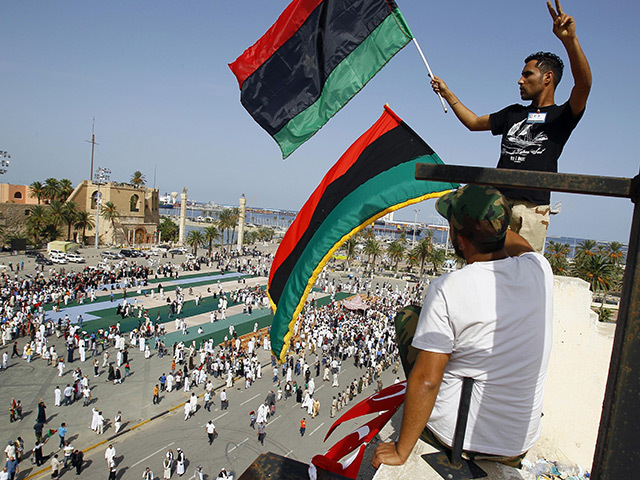
Libya’s oil output fell below its own consumption as fighting spread to Mellitah, a region that hosts the country’s fourth largest oil port, the state petroleum company said.
National Oil Corp. already this month declared force majeure at two export terminals, Es Sider and Ras Lanuf, after an attempt by Islamist militias to capture them.
Force majeure is a legal status that protects a company from liability when it can’t fulfill a contract for reasons beyond its control.
National Oil yesterday reported clashes in the Mellitah area, Libya’s westernmost oil port.
“There is no damage to the facilities till this hour, and the port of Mellitah is still open,” said Mohammed Elharari, the spoksman of the company, by phone in Tripoli, without giving an estimate for the nation’s current oil output.
The US Energy Information Administration estimates Libya’s consumption was 239,000 barrels of oil a day in 2013.
The last estimate of the country’s production, on Dec. 15, was 350,000 barrels a day, according to two people with direct knowledge of upstream operations.
Sitting on Africa’s largest oil reserves, the North African country produced about 1.6 million barrels a day before the 2011 rebellion that ended Muammar Qaddafi’s 42-year rule.
“National Oil Corp. is following with deep concern the events that happened over past two days in the region of Mellitah and their implications for the oil and gas complex,” the NOC said in a statement.
Libya is divided after its internationally recognized government, led by Abdullah al-Thinni, sought refuge in the country’s eastern region after Islamist militias took over Tripoli about five months ago.
Omar al-Hassi set up a rival government in the capital with the backing of Islamist militants.
Thinni announced plans this month to assert his government’s control of oil payments made by foreign companies, prompting the Islamist forces backing his rival to try to seize the oil terminals protected by the Petroleum Facilities Guard.
“The current picture of ports and producing facilities is a harbinger to dangerous consequences should the crisis not be solved soon,” NOC said, and called on rival forces to “spare the petroleum industry, the livelihood of all the Libyans.”
The fighting near Mellitah also affected gas exports to Italy, by curbing gas production at the offshore Bahr Essalam field, one of the two reservoirs that feed the sub-sea pipeline that takes the fuel across the Mediterranean Sea, according to NOC.
The other field is Wafa, onshore, according to documents on the website of Eni Spa, the Italian pipeline operator.
While gas exports to Italy are continuing, the volumes have dropped, NOC’s Elharari said.
Gas flows from Libya at Italy’s Gela entry were at 12.4 million cubic metres on December 20, down from 20.3 million cubic meters a week earlier, according to data from Snam, the Italian grid, on Bloomberg.
Libya has nine oil export terminals, of which two, Jurf and Bouri, are offshore and relatively immune to the fighting.
Zawiya, the second-largest, and Zueitina, the sixth-largest, are not exporting because they’re not receiving crude from fields upstream as a result of protests or military clashes. The other ports, Brega and Hariga, are open, according to NOC’s Elharari.
Recommended for you
